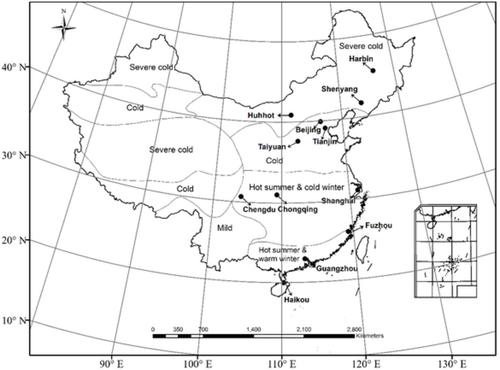当前位置:
X-MOL 学术
›
Meteorol. Appl.
›
论文详情
Our official English website, www.x-mol.net, welcomes your
feedback! (Note: you will need to create a separate account there.)
Impacts of temperature and humidity changes on air-conditioning design load under the climate change conditions in different climate zones of China
Meteorological Applications ( IF 2.3 ) Pub Date : 2021-09-02 , DOI: 10.1002/met.2026 Jingfu Cao 1, 2 , Mingcai Li 1, 2 , Min Wang 3 , Bojia Li 3
Meteorological Applications ( IF 2.3 ) Pub Date : 2021-09-02 , DOI: 10.1002/met.2026 Jingfu Cao 1, 2 , Mingcai Li 1, 2 , Min Wang 3 , Bojia Li 3
Affiliation

|
Meteorological parameters, as the important basis for improving building energy efficiency, will show apparent changes under climate change conditions. In this study, outdoor design temperature and humidity for air-conditioning system in 12 cities, representing major climatic zones of China, were analysed to determine the impacts of temperature and humidity on the design load of air-conditioning system. The results showed that outdoor design temperature largely increased during the last few decades and relative humidity apparently decreased except for two cities belonging to the severe cold and hot summer and cold winter climate zones. The increase in temperature and decrease in humidity have made obvious changes in the design load of air-conditioning system. The design loads for cooling increased 1.8%–10% in these selected cities during 1991–2017 compared with 1961–1990. By contrast, the design loads for dehumidification decreased 0.8%–7% in 1991–2017 relative to 1961–1990. When the cooling and dehumidification were considered together, the design loads changed from −1.5% to 4.1% in the two periods, depending on cities or climate zones. These results demonstrated that, under the condition of climate change, the combined changes of humidity and temperature rather than temperature alone should be fully considered to determine the design capacity of air-conditioning system, especially for temperature and humidity independent control (THIC) air-conditioning system, to save energy and improve indoor comfort.
更新日期:2021-09-03











































 京公网安备 11010802027423号
京公网安备 11010802027423号